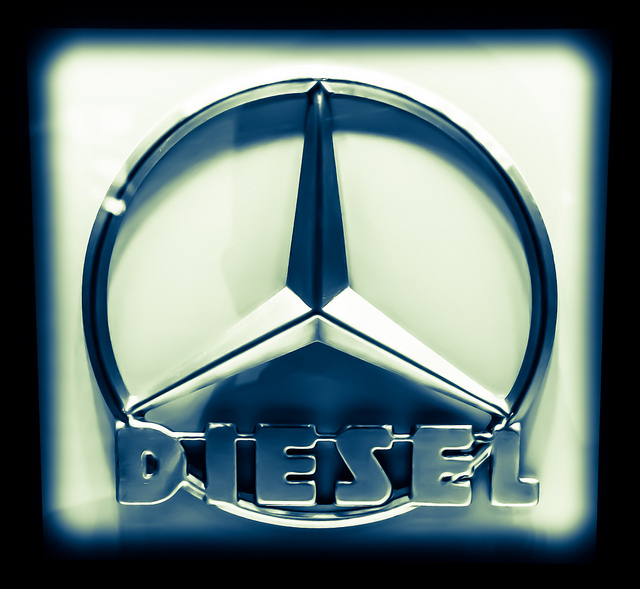
Photo by Christian Bortes (Flickr)
Diesel-fueled vehicles and Mercedes-Benz share a long history, starting with the Mercedes-Benz 260 D. In 1936, the 260 D was one of the first passenger automobiles produced to run using a diesel-fueled engine. Like cars, both diesel fuel and technology have changed and improved over time, resulting in quieter vehicles and a cleaner experience. Clean diesel utilizes ultra-low-sulfur diesel, which meets the current U.S. standards for both highway and off-highway driving, advanced and efficient diesel car engines, and the latest emissions controls. Ultra-low-sulfur diesel contains sulfur amounts that are as much as 97 percent less than in regular diesel. In addition, it also reduces the amount of soot, smoke, nitrogen oxide, and other particulates and emissions that are harmful to the environment and human health.
A diesel engine relies on the heat from air compression to ignite diesel fuel and release the energy needed to operate a vehicle. This is unlike gas engines that utilize spark plugs to ignite the fuel. Modern engines that run on clean diesel use technology that makes this process cleaner and more favorable for the environment. This technology includes common rail fuel injection, improved configuration of the combustion chamber, electronic controls, and variable injection timing. In addition, clean diesel engines use emissions controls that work with the ultra-low-sulfur diesel, such as exhaust gas recirculation, selective catalyst reduction, and diesel particulate filters.
Mercedes engines that utilize BlueTEC clean diesel technology have the ability for greater and also more complete power combustion courtesy of a variable-vane turbocharger and high-pressure fuel injection. One of the most impressive parts of the BlueTEC system is the liquid solution called AdBlue. AdBlue injects into the exhaust after it has first been cleaned by the oxidizing catalytic converter and the diesel particulate filters. This reduces nitrogen oxide by 80 percent by converting it into nitrogen, water vapor, and oxygen, which are safe for the environment and living creatures. People driving Mercedes BlueTEC vehicles have the option of using ultra-low-sulfur diesel found at most gas stations, or they can use B5 biodiesel.
Mercedes engines using clean diesel technology are a competitive alternative to gasoline-electric hybrid cars. The lithium-ion batteries in hybrid cars are made with toxic chemicals and require a lot of energy during their production. They also recharge using electricity, which in some areas is produced by fossil-fuel-powered electric plants. Furthermore, while hybrid cars use less fuel than clean diesel vehicles in city driving and stop-and-go traffic, clean diesel cars use less fuel during long road trips. Consumers looking to buy a new Mercedes with BlueTEC have several options, as it is currently available in the E-Class sedan, GLS SUV, and GLE SUV models.
Not all car manufacturers have been as fortunate as Mercedes-Benz with their clean diesel vehicles. In the case of Volkswagen, the car dealer even created some concerns when it became the center of a scandal in 2015. In its bid to increase clean diesel sales in the United States, the auto manufacturer equipped their vehicles with software that acted as a “defeat device.” This device was designed to detect vehicle inspection conditions and alter the car’s performance during the testing to produce more favorable, yet false, results. The Environmental Protection Agency made this discovery in September 2015, at which time it issued Volkswagen a Notice of Violation of the Clean Air Act. But despite this scandal, car buyers should not be concerned about modern diesel engines, especially the ground-breaking ones now being produced by Mercedes.
For more information about modern diesel engines, check out the following sites:
